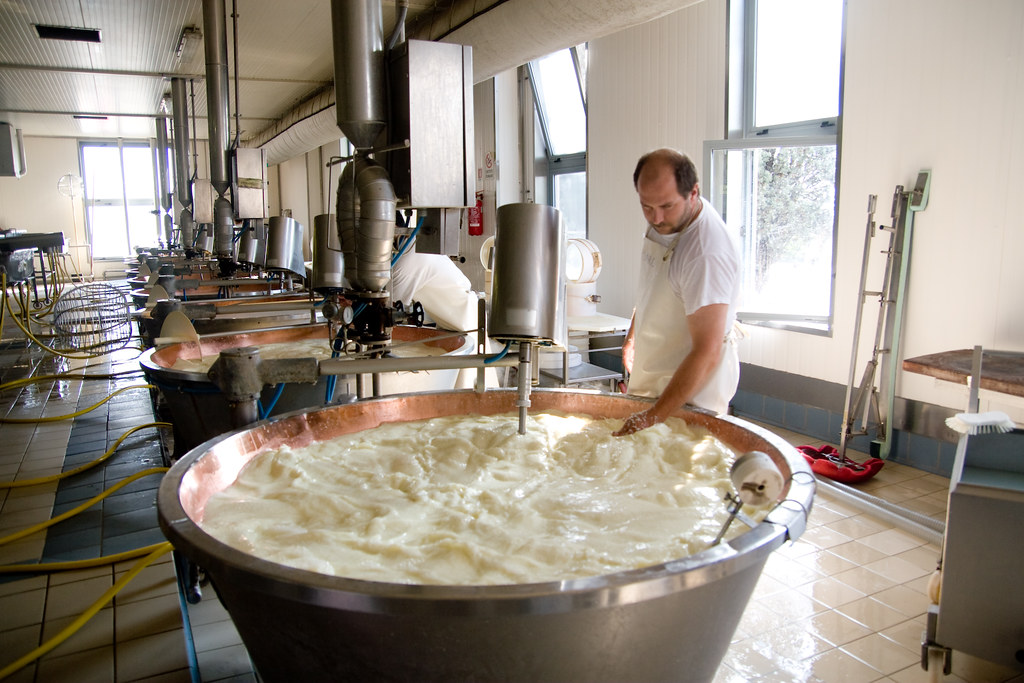Why Floridia Cheese Thomastown Is a Treasure in Melbourne Made Cheese
Why Floridia Cheese Thomastown Is a Treasure in Melbourne Made Cheese
Blog Article
Opening the Secrets of Artisanal Cheese Making: A Step-by-Step DIY Overview
In the world of cooking craftsmanship, artisanal cheese making stands as a testament to the fragile balance in between tradition and development. Each action in the process, from picking the right milk to perfecting aging techniques, holds within it a wide range of expertise passed down with generations. As we get started on this journey to demystify the art of developing elegant cheeses, we are confronted with a tapestry of secrets and skills waiting to be unwinded. Join us as we discover the details of this old craft, where perseverance, science, and art merge to produce tastes that entice the detects.
Picking the Right Milk
When beginning on the trip of artisanal cheese production, the option of milk plays an essential function in determining the top quality and characteristics of the end product. The kind of milk picked impacts the flavor, appearance, and generally profile of the cheese. Raw milk, straight from the pet, is liked by lots of artisanal cheesemakers as a result of its special mix of enzymes, microorganisms, and flavor compounds. Nevertheless, utilizing raw milk features dangers and laws, making sterilized milk a much safer option for novices.
When picking milk for cheese production, it is very important to consider the fat content. Higher fat material in milk can result in a creamier and richer cheese, while lower fat web content may lead to a drier and stronger appearance. Furthermore, the source of the milk, whether from cows, goats, lamb, or buffalo, adds unique tastes and features to the cheese (Cheese Makers Melbourne). Each sort of milk brings its own subtleties, enabling a variety of cheese selections to be crafted based upon the picked milk. Eventually, the choice of milk is a fundamental decision that establishes the foundation for a successful artisanal cheese-making endeavor.
Culturing and Coagulating
To start the cheese-making process, the vital steps of culturing and coagulating should be meticulously performed to change milk into curds and whey. Culturing includes introducing valuable germs to the milk, which after that starts the fermentation process. These bacteria transform lactose (milk sugar) into lactic acid, producing the acidic setting required for coagulation. The kind of society used can dramatically impact the flavor, texture, and ripening of the final cheese product.

The timing and temperature level control throughout culturing and coagulation are crucial aspects that influence the last outcome of celebrity. Appropriate implementation of these actions is vital to that site guarantee the wanted texture, taste, and uniformity of the artisanal cheese being generated.
Draining and Pressing Curds
After the milk proteins have actually coagulated and the curds have been reduced to release whey, the next critical step in artisanal cheese making entails draining pipes and pushing the curds to accomplish the desired appearance and consistency of the last cheese item. The time for draining can vary depending on the kind of cheese being made and the wanted wetness content.
Pushing aids get rid of any type of remaining whey and compacts the curds to develop a solid cheese wheel. Appropriate pressing and draining are vital actions that significantly impact the top quality and qualities of the artisanal cheese being generated.
Aging and Flavoring Strategies
Applying careful aging and flavor techniques is critical in improving the deepness and complexity of artisanal cheeses, boosting their preference profiles to exquisite degrees of refinement and class. Aging plays a critical function in creating the one-of-a-kind flavors and textures that distinguish artisanal cheeses.
Flavoring methods additionally contribute dramatically to the last taste of artisanal cheeses. Cheesemakers may choose to introduce extra flavors by integrating ingredients such as natural herbs, seasonings, or perhaps fruits right into the cheese during the production procedure. Furthermore, some cheeses are cleaned or rubbed with various fluids, such as brine or alcohol, to enhance their appearances and flavors.
Wrapping and Keeping Cheeses

Verdict
In final thought, mastering the art of artisanal cheese making entails carefully picking the best milk, complying with exact culturing and coagulating procedures, find here draining and pushing curds successfully, and making use of numerous aging and flavor techniques. Keep in mind to wrap and save your cheeses appropriately to guarantee optimal flavor and texture advancement.
Each type of milk brings its very own subtleties, permitting for a large array of cheese varieties to be crafted based on the chosen milk.After the milk proteins have actually coagulated and the curds have been cut to launch whey, the next essential action in artisanal cheese making includes draining and pushing the curds to accomplish the wanted structure and uniformity of the final cheese item. The majority of cheeses must be wrapped in wax paper or cheese paper to enable them to breathe while shielding them from drying out. For cheeses that require to continue aging, such as bloomy rinds or cleaned peels, guarantee they are saved in a trendy environment like a cheese cave or a fridge set to the proper temperature. By paying focus to the covering and storage space of artisanal cheeses, cheese manufacturers and enthusiasts can protect the stability of these delicacies and completely appreciate their intricate flavors.
Report this page